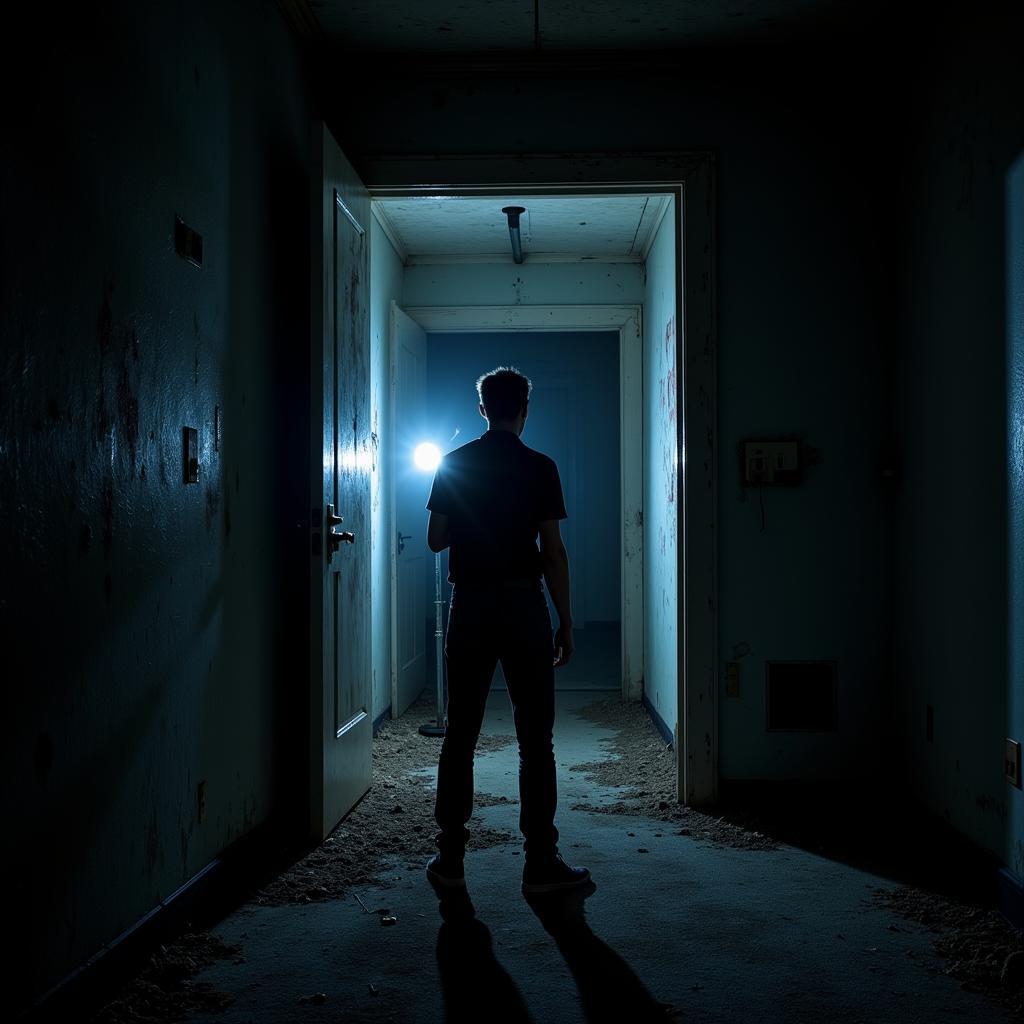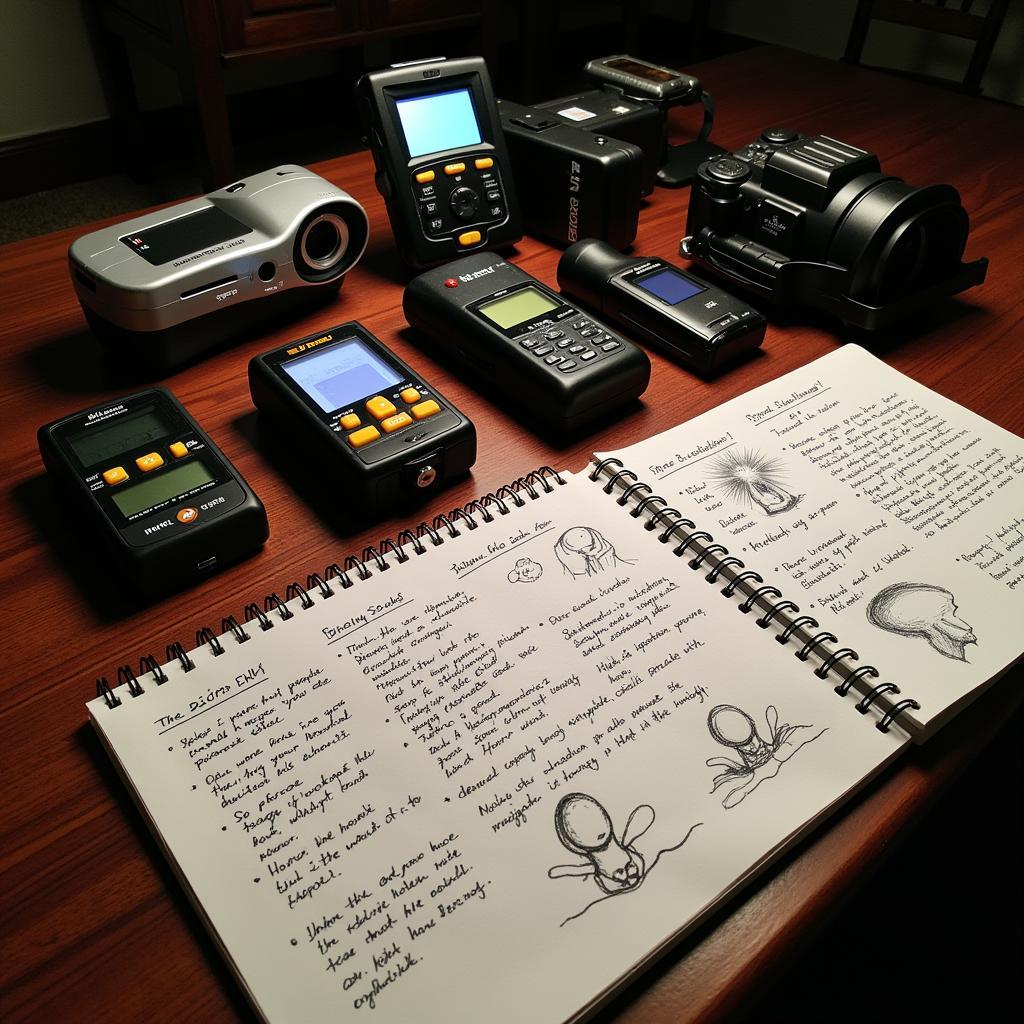Ethnographic Design Research might seem a world away from the realm of ghosts, UFO sightings, and unexplained phenomena. But surprisingly, these seemingly disparate fields share a common thread: the quest to understand the unknown. Just as anthropologists delve into the intricacies of human cultures, Paranormal Researchers strive to unravel the mysteries of the unseen world.
 Ethnographic Design Research in Paranormal Investigation
Ethnographic Design Research in Paranormal Investigation
Bridging the Gap: Ethnography and the Paranormal
Ethnographic design research, with its emphasis on observation, participation, and in-depth interviews, can be a powerful tool for paranormal investigators. By immersing themselves in the environments and experiences of those who claim to have encountered paranormal activity, researchers can gain invaluable insights into the cultural contexts, personal beliefs, and psychological factors that may shape these perceptions.
This approach moves beyond simply debunking or proving the existence of ghosts or other entities. Instead, it seeks to understand the human experience of the paranormal, exploring the ways in which these experiences impact individuals and communities.
Tools of the Trade: Applying Ethnographic Methods
So, how exactly can ethnographic design research be applied to paranormal investigation? Here are some key methods:
- Participant Observation: Researchers can attend séances, ghost hunts, or other paranormal events, not as skeptics or believers, but as keen observers. They can document the rituals, interactions, and emotional responses of participants, gaining a deeper understanding of the cultural and social dynamics at play.
- In-depth Interviews: Conducting in-depth interviews with individuals who claim to have had paranormal experiences can provide rich, qualitative data. Researchers can explore the individual’s personal history, belief systems, and the specific details of their experiences, paying close attention to the language used and the emotions expressed.
- Artifact Analysis: This could involve examining objects believed to be associated with paranormal activity, such as allegedly haunted artifacts or objects related to UFO sightings. By studying the history, provenance, and cultural significance of these objects, researchers can gain insights into the beliefs and practices surrounding them.
- Visual Ethnography: Using photography, video recordings, and other visual media can capture the atmosphere of a location, the emotions of witnesses, and even potential anomalies that might otherwise go unnoticed.
 Paranormal Research Tools and Ethnography
Paranormal Research Tools and Ethnography
Unveiling the Human Element: The Significance of Context
One of the most crucial contributions of ethnographic design research to paranormal investigation is its focus on context. By considering the cultural background, personal beliefs, and psychological states of individuals, researchers can better understand how these factors might influence their perceptions and interpretations of events.
For instance, a person raised in a culture steeped in folklore and ghost stories might be more likely to interpret unusual noises or sensations as paranormal activity. Similarly, individuals experiencing high levels of stress or anxiety might be more susceptible to misinterpreting sensory information.
By acknowledging these complexities, researchers can avoid simplistic explanations and instead embrace the nuanced reality of human experience.
Ethical Considerations: Respect and Sensitivity
When conducting ethnographic design research in the context of paranormal investigation, ethical considerations are paramount. Researchers must approach their subjects with respect and sensitivity, recognizing that these experiences, whether verified or not, can be deeply personal and emotionally charged.
It is crucial to obtain informed consent, ensure confidentiality, and avoid exploiting or sensationalizing the experiences of those involved. By adhering to ethical research practices, researchers can build trust with their subjects and contribute to a more nuanced and empathetic understanding of the paranormal.
Conclusion: A New Lens on the Unknown
Ethnographic design research offers a fresh perspective on the often-contested field of paranormal investigation. By employing rigorous methodologies and ethical practices, researchers can move beyond simple attempts at proof or debunking to delve into the intricate relationship between human experience, culture, and the perception of the unknown.
This approach, with its focus on empathy and understanding, has the potential to shed light on the complexities of paranormal phenomena, not by definitively proving or disproving their existence, but by illuminating the profound ways in which these experiences shape our beliefs, fears, and our understanding of the world around us.
FAQs: Ethnographic Design Research and the Paranormal
-
Can ethnographic research really be applied to something as subjective as paranormal experiences?
Absolutely. Ethnography focuses on understanding human experiences and cultures, regardless of their perceived objectivity. By applying these methods, we can gain valuable insights into how and why people believe in and experience the paranormal. -
Isn’t this just a way for paranormal believers to validate their beliefs?
Not necessarily. While ethnographic research acknowledges and respects individual beliefs, it doesn’t set out to prove or disprove them. Instead, it seeks to understand the broader context in which these beliefs exist and the impact they have on individuals and communities. -
What are the potential benefits of using ethnographic research in paranormal investigation?
This approach can help us move beyond simplistic explanations and explore the complex interplay of cultural beliefs, personal experiences, and psychological factors that contribute to paranormal beliefs and experiences.
Do you have more questions about how ethnographic design research can be used to explore the world of the paranormal? Contact our team at [email protected] or visit our website for more in-depth articles and resources on this fascinating topic. Our team is available 24/7 to assist you with your queries. You can also visit us at No. 31, Alley 142/7, P. Phú Viên, Bồ Đề, Long Biên, Hà Nội, Việt Nam.